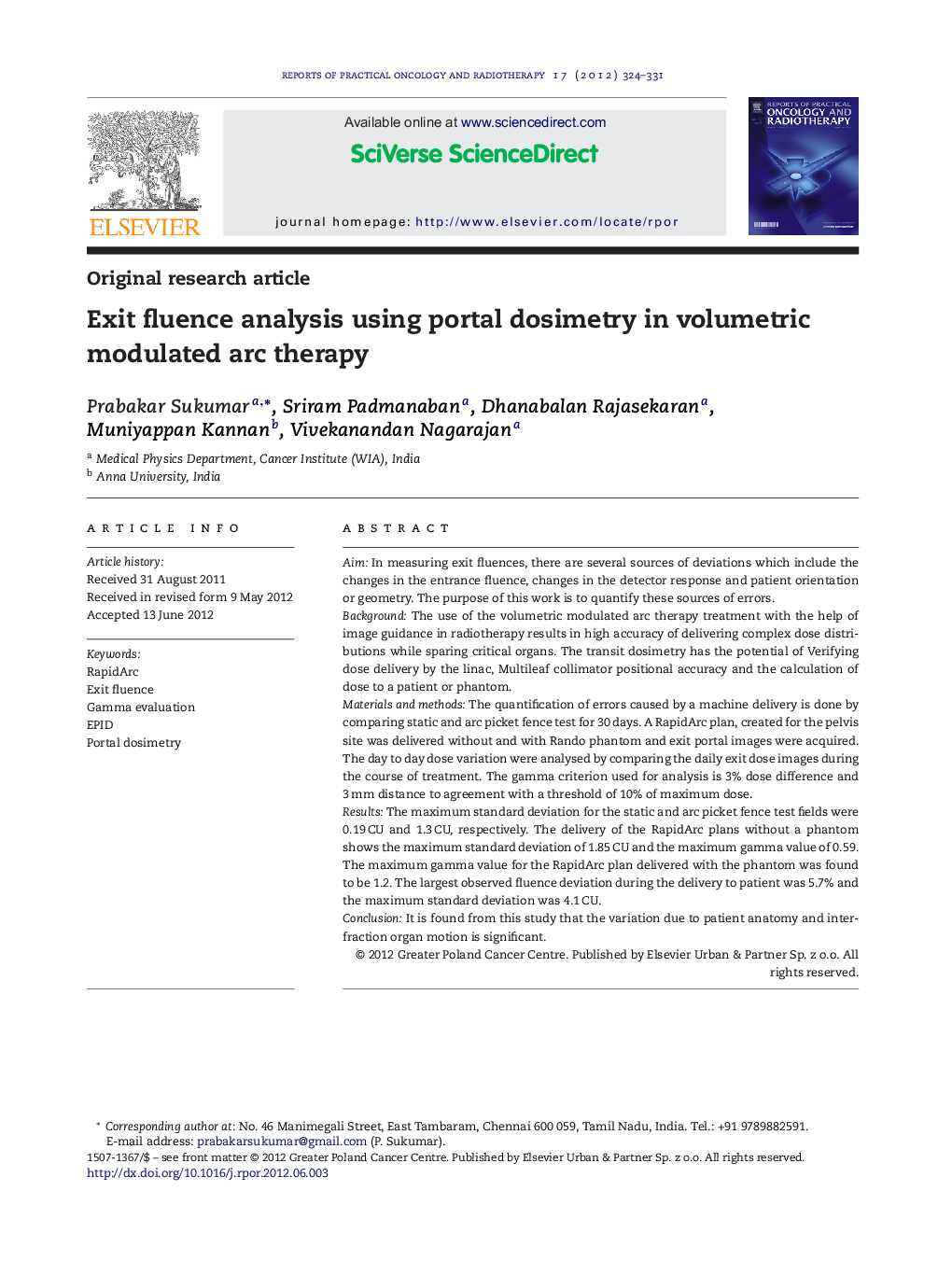| Article ID | Journal | Published Year | Pages | File Type |
|---|---|---|---|---|
| 1855505 | Reports of Practical Oncology & Radiotherapy | 2012 | 8 Pages |
AimIn measuring exit fluences, there are several sources of deviations which include the changes in the entrance fluence, changes in the detector response and patient orientation or geometry. The purpose of this work is to quantify these sources of errors.BackgroundThe use of the volumetric modulated arc therapy treatment with the help of image guidance in radiotherapy results in high accuracy of delivering complex dose distributions while sparing critical organs. The transit dosimetry has the potential of Verifying dose delivery by the linac, Multileaf collimator positional accuracy and the calculation of dose to a patient or phantom.Materials and methodsThe quantification of errors caused by a machine delivery is done by comparing static and arc picket fence test for 30 days. A RapidArc plan, created for the pelvis site was delivered without and with Rando phantom and exit portal images were acquired. The day to day dose variation were analysed by comparing the daily exit dose images during the course of treatment. The gamma criterion used for analysis is 3% dose difference and 3 mm distance to agreement with a threshold of 10% of maximum dose.ResultsThe maximum standard deviation for the static and arc picket fence test fields were 0.19 CU and 1.3 CU, respectively. The delivery of the RapidArc plans without a phantom shows the maximum standard deviation of 1.85 CU and the maximum gamma value of 0.59. The maximum gamma value for the RapidArc plan delivered with the phantom was found to be 1.2. The largest observed fluence deviation during the delivery to patient was 5.7% and the maximum standard deviation was 4.1 CU.ConclusionIt is found from this study that the variation due to patient anatomy and interfraction organ motion is significant.
